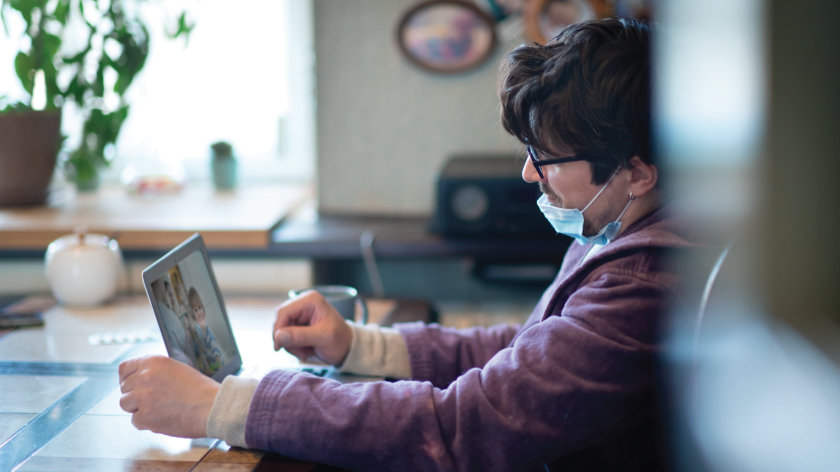The silent challenge of the Covid-19 lockdown
Many of us have found ourselves working from home for the first time in our careers. I have formerly worked in a full-time remote position, so working from home now seems somewhat natural or even normal to me and to many others around the globe. Technology has made this a highly viable option by relieving many of the barriers to work-from-home scenarios.
Along comes Covid-19, social distancing and stay-at-home requirements and now a larger portion of the workforce is pressed into work-from-home situations. The limitations on personal or social contact have impacted both our professional personal lives. To many, this is a “new normal” and is requiring adaptations. We fortunately have numerous technologies available to assist with this arrangement.
It is easy to argue the point that video calls, whether between two or 20 people have been instrumental in allowing business processes to move to a remote work scenario and keep them running smoothly. It is easy to point out the benefits of being able to connect with our extended family members, finding comfort seeing their faces, and reassuring ourselves that they are well. As a grandparent, I can attest to this myself.
However, as with many new technologies, the benefits have come with new stresses for us. Zoom calls remove the visibility of many of the non-verbal clues in our interactions with each other. These calls present the participants of meetings in unfamiliar ways. Video meetings restrict some of the more dynamic properties of social and formal interactions, and make us more conscious of ourselves, our persona, and our personal environment. Not everyone is affected by these factors in the same way or to the same degree, but all do impact the meetings and interactions to some level. These factors contribute to both conscious and unconscious stressors, and many of us can feel exceptionally fatigued after even just one meeting.
What can we do?
Here are a few tips to help you deal with some of the items described above:
- Give yourself (and others) time between meetings. Even a five-minute break provides noticeable relief before the next call. If you’re scheduling a meeting, take this into account and start or end the meeting accordingly.
- Take your focus away from the screen and camera during the meeting. Take notes with pen and paper or a tablet device. I use an iPad to take notes during meetings. If you’re not a note-taker, change your focus and peek out a window for a few seconds or look to see what the dog is doing. Give yourself a break from concentrating on the faces on your screen.
- Relax your posture. Many of us – yes, I’m in this group – tend to sit stiffly or stilted, uncomfortably so, while in video conferences. While stretching out in a hammock may be frowned upon where you work (or maybe not), we don’t need to look like we’re sitting in front of a Congressional inquiry. So, relax your shoulders, lean back in your chair, couch or bean bag.
- We rarely sit in the same position for the entirety of an in-person meeting so there’s no reason to do so in a video meeting. In longer meetings, turn your camera off for a few seconds and do some jumping jacks or walk laps around your chair.
- Most video meetings have a dial-in number for attendees with poor network connections or without video capability. Occasionally, take advantage of this and dial in on your phone instead of connecting with your computer. When you do so, it gives you the ability to move around – and it has been shown that people tend to be more creative when walking around during meetings and conversations. Take the meeting call while walking on your treadmill or using your elliptical. Who’s going to know you weren’t diligently at your desk?
- Have a limited video meeting where the cameras are on for the first few minutes for everyone to greet each other and have a few minutes of informal chat. Then, turn off the cameras and have a voice-only or a voice-and-presentation-only meeting. This is particularly useful for lengthy meetings with a large quantity of material to cover.
- If you’re one of several speakers in a meeting, turn your camera off when you have completed your presentation. I frequently do this as a courtesy to the speakers who follow me.
- Embrace the interruption! If your cat, like mine, wants to sing the “song of her people” to everyone during a meeting bring it on! Put her on camera. My cat and two dogs have all been on camera during meetings during the lockdown. When I worked from home full time, my visiting grandchildren even appeared in a couple of meetings. Most of us welcome these minor distractions during meetings – whether our own or someone else’s – and now that we’re all in this together, even more so.
Scott is an Enterprise Architect on the Vitality Group Reporting Team in the Chicago office. He shares his home office, the Plainfield Satellite Office, with 2 dogs and 1 cat who frequently join the Teams meetings.






